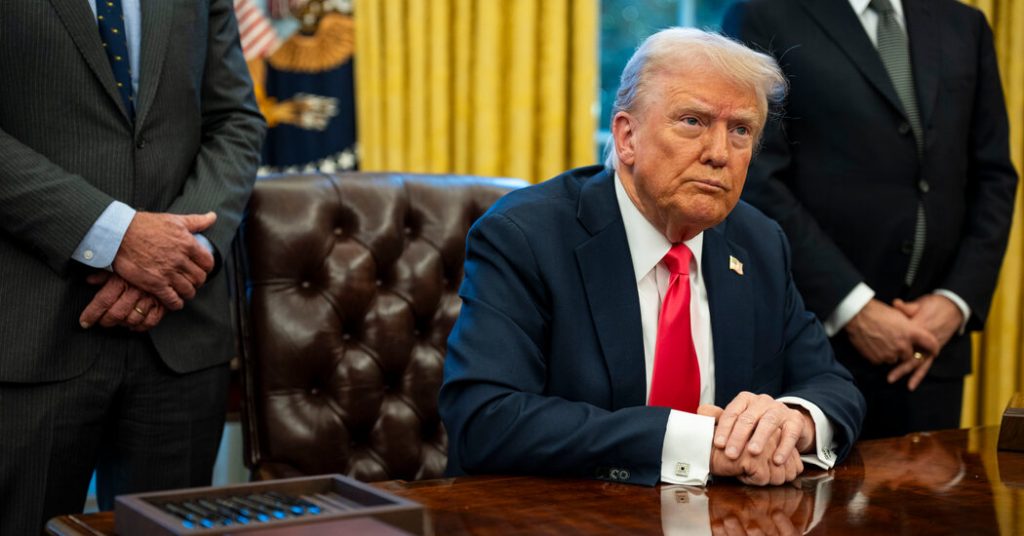President Trump Unveils the "Gold Card" Visa Program
In a recent press conference held in the Oval Office, President Trump introduced an ambitious new visa program, which he dubbed the "Gold Card." This program is designed to offer a pathway to citizenship for high-net-worth individuals and is positioned as a more exclusive and sophisticated alternative to the existing EB-5 visa program. The President emphasized that the Gold Card would be reserved for "very high-level people" who are capable of making significant contributions to the U.S. economy. The program’s price tag? A hefty $5 million investment, which Mr. Trump suggested would be a small price to pay for the opportunity to live and work in the United States.
Replacing the EB-5 Visa: A New Era of High-Tier Immigration
The Gold Card program is set to replace the EB-5 visa, which has long been a pathway to citizenship for wealthy foreign investors but has also been criticized for its potential for abuse and fraud. According to Commerce Secretary Howard Lutnick, the new program will be more stringent in its vetting process, ensuring that only the most qualified and reputable individuals are granted access. Lutnick described the Gold Card as a way to attract "world-class global citizens" who can bring value to the country through their investments and business acumen. While the details of the program are still scarce, the administration has made it clear that the Gold Card will be a more exclusive and tightly controlled alternative to the EB-5.
A $5 Million Ticket to Citizenship
At the heart of the Gold Card program is a $5 million investment requirement, which is significantly higher than the EB-5’s current threshold. President Trump emphasized that this investment would not only provide a pathway to citizenship but also create jobs and stimulate economic growth. The President was quick to highlight the potential economic benefits of the program, suggesting that the government could sell up to a million Gold Cards, generating substantial revenue. When asked if Russian oligarchs might be eligible for the program, Mr. Trump seemed open to the idea, dismissing concerns about the source of their wealth. “They’re not as wealthy as they used to be,” he quipped, adding that $5 million was a sum they could easily afford.
The Government’s Vision for the Gold Card Program
Secretary Lutnick was on hand to provide additional details about the program, emphasizing that the Gold Card would be a more discerning and exclusive option than the EB-5. He stressed that the program would prioritize individuals who are not only wealthy but also capable of making meaningful contributions to the U.S. economy. The administration’s vision is to attract high-caliber individuals who can bring skills, capital, and innovation to the country. While the specifics of the vetting process remain unclear, the emphasis on quality over quantity suggests that the Gold Card will be a highly selective program.
A New Chapter in Immigration Policy
The introduction of the Gold Card program marks a significant shift in the administration’s approach to immigration, prioritizing economic contributions over other factors. While the program is expected to attract criticism from those who argue that it favors the wealthy, the administration is framing it as a pragmatic solution to attract top talent and boost economic growth. The program’s focus on high-net-worth individuals reflects a broader trend in immigration policy, where economic utility is increasingly being used as a metric for eligibility.
The Future of the Gold Card Program
Looking ahead, the success of the Gold Card program will depend on its ability to attract high-caliber individuals while avoiding the pitfalls of its predecessor. The administration is banking on the program’s exclusivity and high investment threshold to generate revenue and stimulate economic growth. Whether the Gold Card will live up to its promise remains to be seen, but one thing is clear: it represents a bold new direction in U.S. immigration policy, one that emphasizes economic contributions and exclusivity. As the program moves forward, it will be closely watched by policymakers, immigration advocates, and potential applicants alike.


